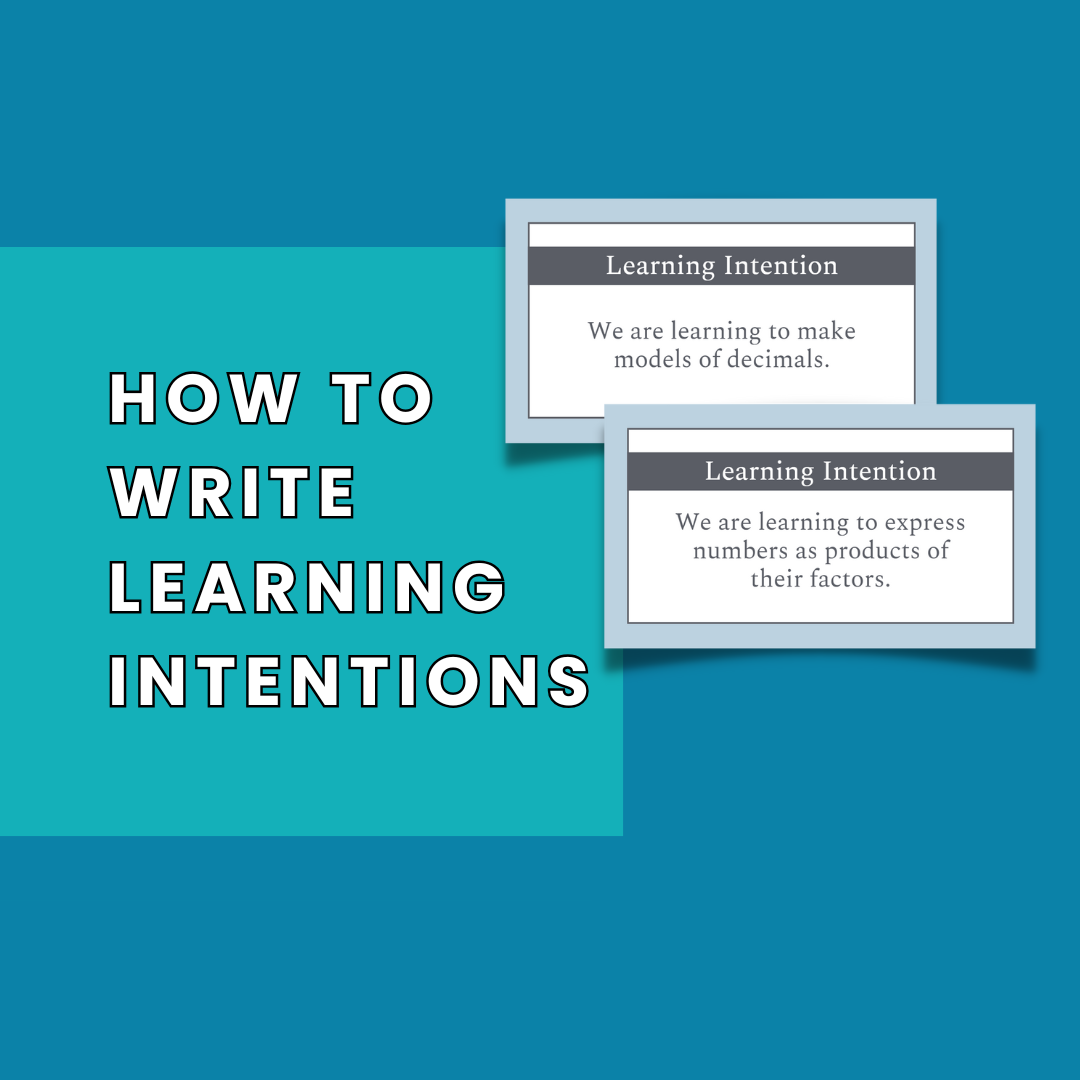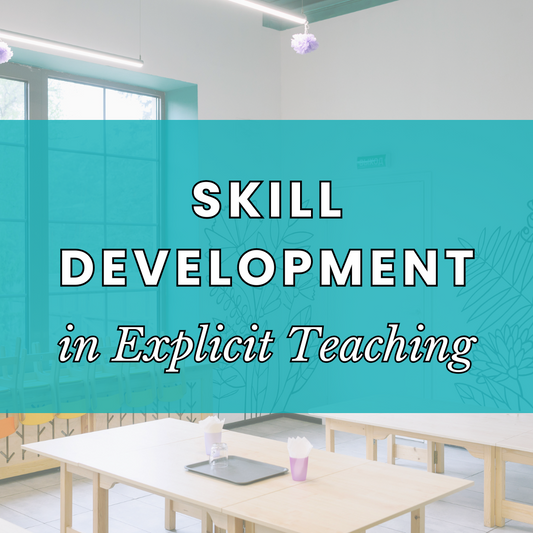
Learning Intentions: How to Write Them
Share
It can be difficult to know how to write learning intentions. As educators, we all want to ensure that our students achieve success in their academic pursuits. One way to help them succeed is through explicit teaching, which involves breaking down complex concepts and providing clear and concise instruction. However, in order to be effective, explicit teaching must include specific objectives for learning that guide the lesson and help students understand what they are expected to learn. In this blog post, we will discuss the importance of objectives for explicit teaching, provide examples of how to write them, and explore how learning intentions and success criteria can work together to promote student learning.
What are Learning Intentions?
Learning intentions are statements that clearly articulate what students are expected to learn in a lesson or unit of study. They help to focus the teaching and learning process by providing a clear goal for both teachers and students. The intentions should be written in clear and concise language that is accessible to all students. They should also be specific enough to guide the lesson, but broad enough to allow for student inquiry and exploration.
How to Write Learning Intentions
When writing a learning intention, it is important to keep the following in mind:
- Start with an action verb - Use action verbs such as "identify," "explain," "compare," or "analyse" to indicate what students will be doing.
- Be clear and concise - Use simple language and avoid jargon or technical terms that may be unfamiliar to students.
- Use specific language - Be specific about what students will be learning and what skills they will be developing.
- Align with curriculum standards - Ensure that the learning intention aligns with curriculum standards and learning outcomes.
- Focus on one skills at a time - try not to incorporate too many skills into one lesson (such as identifying and representing). Isolate one or two skills per lesson (depending on the complexity).
Tip: Use the Australian Curriculum elaborations to write learning intentions.
Examples
Here are some examples of learning intentions for a math lesson:
- We are learning to identify and name geometric shapes.
- We are learning to solve equations involving one variable.
- We are learning to explain the concept of fractions and how to add and subtract them.
Learning Intentions and Success Criteria
For example, if the learning intention is for students to be able to identify and name geometric shapes, the success criteria might include:
- Students can identify a square, rectangle, triangle, and circle.
- Students can name the number of sides and corners for each shape.
- Students can draw each shape accurately.
By providing clear success criteria, students are able to self-assess their learning and see their progress toward achieving the learning intention.
Mathematics
Learning Intention: We are learning to explain the concept of fractions and how to add and subtract them.
Success Criteria:
- Students can identify the denominator of a fraction.
- Students can identify the numerator of a fraction.
- Students can add or subtract fractions with like denominators.
- Students can simplify their answer to the lowest terms.
Learning Intention: We are learning to multiply two-digit numbers using an algorithm.
Success Criteria:
- Students can identify the place value of each digit in a two-digit number.
- Students can multiply two-digit numbers using the standard algorithm.
- Students can check their answer using estimation or mental math.
- Students can explain their reasoning and steps taken to solve the problem.
Learning Intentions on Display
Displaying learning intentions in the classroom is crucial for creating a focused and effective learning environment. Clearly articulated learning intentions help students understand the purpose and goals of their lessons, enabling them to see the relevance of their activities and assessments. This transparency fosters greater student engagement and motivation, as learners can track their progress and understand what is expected of them. Additionally, it aids teachers in planning and delivering instruction that is aligned with desired outcomes, ensuring a coherent and structured approach to education.
John Hattie's research on Visible Learning highlights the significant impact of visible learning intentions on student achievement, emphasising that when students know what they are learning and why, they are more likely to succeed. Overall, displaying learning intentions enhances both teaching and learning by providing clarity and direction.
Here are some templates that can help you display learning intentions in the classroom.
WALT WILF Posters by Brolga Education
Visible Learning Posters | Colourful Line Designs by Brolga Education
Posters for Visible Learning | Colourful Floral Designs by Brolga Education
Help Students Achieve Success
Learning intentions are an essential component of effective explicit teaching. They provide a clear goal for both teachers and students, and help to focus the learning process. Writing effective learning intentions involves starting with an action verb, being clear and concise, using specific language, and aligning with curriculum standards. Success criteria are closely linked to learning intentions and help students to monitor their own progress and take ownership of their learning. By using learning intentions and success criteria together, educators can promote student learning and help students achieve success in their academic pursuits.






